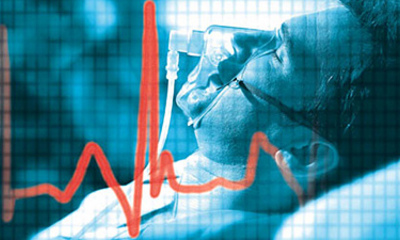Coma- Everything you need to know about it (Medical perspective)
Merry Christmas steemit! Today I have come up with an article about COMA AND ITS TREATMENTS
lets start :)

Pathogenesis
Coma arises from dysfunction of either reticular activating system (RAS) in the brainstem or both cerebral hemisphere.
The RAS can be affected by endogenous metabolic processes,intoxication,ischemia,hemorrhage and mass lesions. It may also be secondarily affected by compression from masses elsewhere i.e from transtentorial or cerebellar herniation.
Bilateral cerebral hemisphere dysfunction is most commonly due to cerebral ischemia (e.g, after cardiac arrest),endogenous metabolic processes or intoxication. Other considerations include bilateral mass lesions,hemorrhage or the same lesions in one hemisphere along with compression of the other hemisphere. A new process superimposed on an old lesion in the opposite hemisphere may also cause coma.
Diagnosis
The initial diagnostic endeavor is to distinguish between structural and metabolic disease because further work-up ad management is usually entirely different for the two. The following rules are helpful-
- Focal neurologic signs in the absence of a history of prior focal CNS disease suggest structural disease.
- Preserved pupillary light reflexes and a non-focal examination suggest metabolic disease.
- A fluctuating level of consciousness is more often seen with metabolic disease.
History
It is important to obtain history from family members,friends,roommates,paramedics,police etc. Specifically ,ask about recent behavior,trauma,drug abuse etc.
The general examination
It should include special attention to the following, vital signs,odor of breath,skin abnormalities, signs of head trauma, and neck stiffness. The essential components of the neurologic examination of the comatose patients are-
Response to auditory stimuli and visual threat
swollen optic discs
Pupil size and light reflex
Eye position
Eye movements
Motor response to pain
Initial laboratory tests
It includes electrolytes,serum glucose,LFTs,BUN,creatinine,CBC and arterial blood gas. Head CT or MRI scan, EEG,Lumbar puncture, toxicology screen etc are done depending upon the likely diagnoses.
Treatments
A large bore IV should be placed and fluids administered according to the patient's hydration status and cardiac function . The patient should be intubated and given ventillatory assistance if clinical or laboratory observations suggest respiratory failure. Hypo or hyperthermia should be treated promptly.
All patients should receive 50% dextrose(25gm), naloxone (0.4-1.2 mg) and thiamine(50mg) IV to counteract possible hypoglycemia,opiate overdose,or thiamine deficiency.
Patients with suspected or possible neck trauma should have head and neck immobilization until x-rays have been cleared.
Patients with elevated intracranial pressure should be treated with the measures .
Over the longer term,patients with an impaired level of consciousness require vigilant care of the airway,skin ,eyes and urinary function. Antacids and cimetidine are administered to prevent GI hemorrhage. Nutrition is preferably given via nasogastric tube, the pareteral route is required if this is not tolerated. Regular range of motion exercises should be carried out daily to maintain joint mobility.
P.S The picture is taken from www.avensonline.org
@theaustrianguy
This post may interest you. I saw your profile and then found this post. So tagged you.